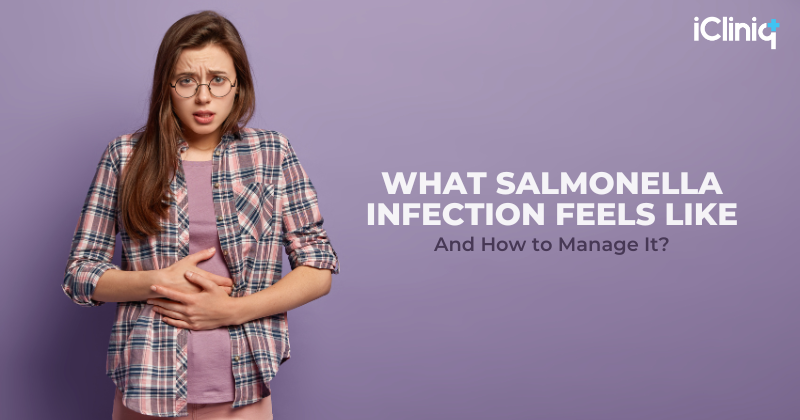What Salmonella Infection Feels Like and How to Manage It?

What Is a Salmonella Infection?
Salmonella is one of the most common causes of food poisoning worldwide. It is caused by bacteria that often hide in undercooked poultry, raw eggs, unpasteurized dairy, and sometimes fruits and vegetables. Once the bacteria enter the body, they target the digestive tract and trigger a reaction that can be both uncomfortable and alarming.
What Does It Feel Like?
Symptoms of Salmonella infection typically appear between 6 to 72 hours after consuming contaminated food or water. The symptoms can appear suddenly, and the severity may vary from mild discomfort to more intense gastrointestinal distress. Common symptoms to watch for include the following:
- Sudden fever.
- Nausea and vomiting.
- Diarrhea (sometimes bloody).
- Stomach cramps.
- Chills and body aches.
- Fatigue and dehydration.
The experience can feel very similar to a nasty stomach bug, but in many cases, it hits harder and can last longer.
Who Is Most at Risk?
While anyone can get infected, some people are more vulnerable to severe illness. These include:
- Infants and small children.
- Older adults.
- Pregnant women.
- People with weak immune systems.
- In high-risk individuals, complications such as dehydration, bloodstream infections, or long-term joint pain can occur.
How to Treat It?
Most healthy people recover without needing antibiotics or hospitalization. Here is what you can do:
- Loss of fluids is the most serious concern. Sip on water, ORS (oral rehydration solution), or clear broths frequently.
- Avoid spicy, greasy, or dairy-heavy foods. The BRAT diet—bananas, Rice, Applesauce, and Toast is gentle on your stomach.
- Give your body time to fight off the infection. Avoid strenuous activity while recovering.
- Do not self-medicate: Avoid taking anti-diarrheal medicines without medical advice. These can sometimes do more harm than good by slowing down the body's ability to eliminate the bacteria.
How to Prevent It?
The good news is that Salmonella infection is largely preventable. A few simple hygiene and food safety steps can go a long way:
- Wash hands with soap before eating and after using the restroom.
- Cook meats thoroughly, especially poultry and eggs.
- Avoid raw milk or unpasteurized dairy products.
- Rinse fruits and vegetables well.
- Keep your kitchen surfaces clean.
- Do not mix raw and cooked foods when preparing meals.
Salmonella is not just a minor inconvenience; it can lead to serious health complications, especially in young children, the elderly, and those with weakened immune systems. Ignoring symptoms can result in dehydration, prolonged illness, or even hospitalization. Hence, early recognition is important. Awareness and prompt care are your best defenses.




